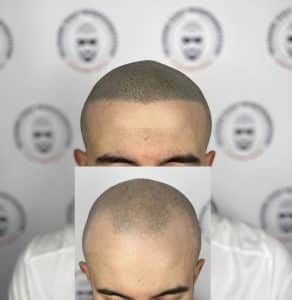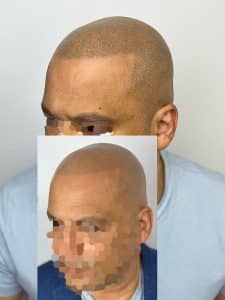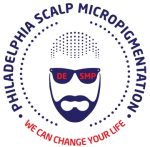Thinking that scalp micropigmentation is a tattoo or a form of permanent makeup isn’t correct. Scalp micropigmentation has its technique, and practitioners should have thorough training to perform the procedure successfully. Many instances of scalp micropigmentation gone wrong have been reported due to inexperience on those who perform them. Companies attempting to utilize scalp tattooing as a service offering need to distinguish between their products or services from other companies. Only those companies who have been trained extensively will know the difference between the two services they provide.
Scalp micropigmentation artists specialize in replicating hair follicles. This is a very unique and specific practice that may require a lot of patience and precision. Tattoo artists implant pigment into the dermal layer, whereas scalp micropigmentation specialists tattoo inside the dermis’s papillary layer, which is beneath the epidermis. In contrast to tattoos, because they only penetrate as far as those skin layers, scalp micropigmentation tattoos look more natural in their replication of hair follicles. The pigment used by tattoo and scalp micropigmentation artists is different. Scalp micropigmentation pigment is made from organic ingredients and is heavily diluted before getting implanted into the skin.
In comparison, tattoo pigment i s made from metals like iron oxide (or other substances). It is deposited into the skin when it is concentrated at its highest form possible, thus why tattoos change to a blue/green colour over time, unlike with scalp micropigmentation. The difference between permanent makeup pigment and scalp micropigmentation pigment is that permanent makeup pigment is made up of several (multiple) colours combined to create a hue (a given colour); some are organic, others are not Scalp micropigmentation pigment is black carbon-based, to better match natural hair follicles it’s diluted to be lighter than standard ink.
s made from metals like iron oxide (or other substances). It is deposited into the skin when it is concentrated at its highest form possible, thus why tattoos change to a blue/green colour over time, unlike with scalp micropigmentation. The difference between permanent makeup pigment and scalp micropigmentation pigment is that permanent makeup pigment is made up of several (multiple) colours combined to create a hue (a given colour); some are organic, others are not Scalp micropigmentation pigment is black carbon-based, to better match natural hair follicles it’s diluted to be lighter than standard ink.
Unfortunately, when it comes to tattooists attempting to perform scalp micropigmentation, the results are usually pretty terrible. That is because they are taking on a task that is beyond their level of expertise or that they have not been adequately trained for in the first place. Scalp micropigmentation requires the use of tiny needles, just like with tattooing, to replicate hair follicles. Still, tattooists typically don’t have access to the correct equipment in order to do this skillfully.
How Does Scalp Micropigmentation repair work?

Best SMP Transformation
Here are some ways botched micropigmentation can be repaired.
- Salabrasion – involves a broken skin area similar to that of a standard tattoo. The tissue absorbs a saline solution with a very high salt content that causes the abnormal skin cells to be replaced by healthy new ones. Salabration has been known to lighten the tattoo. The best method for this particular type of removal is only recommended if you have completed the entire process over a period of one month so as to ensure no more ink is present in any scab or scar tissue.
- Adding pigment – Many tattoo artists and permanent cosmetic artists only have one option when trying to fix a lousy scalp micropigmentation procedure. They can only add more pigment to attempt a fix. This can be very frustrating since the client wanted their scalp micropigmentation done, and it may still not look 100% due to the cover-up attempt.
- Laser tattoo removal – The best way we know of to deal with the issue of a bad scalp micropigmentation application is by engaging in laser tattoo removal. By using medical-grade lasers and controlled fading techniques along with precise targeting methods and spot sizes, you can reach success in removing those nasty tattoos from your scalp without worrying about damaging the skin further so as to avoid having someone fix your mistake.
The effectiveness of scalp micropigmentation is dependent mainly on the artists providing this service.

